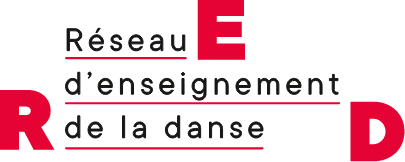Initially known as the Réseau d’écoles partenaires en danse classique du Québec (REPDCQ), the Réseau d’enseignement de la danse (RED) was founded in December 1998 as a result of a 1996 study that portrayed a worrisome situation for classical ballet training and teaching in the province. Part of an action plan meant to resolve difficulties, the network was established by a few provincial schools specialized in classical ballet, with the assistance of Quebec’s Ministry of Culture (MCC).
1998 to 2003
Originally comprised of six dance schools from different regions of the province as well as l’École supérieure de ballet du Québec and a representative of the MCC (the REPDCQ's main funder), the partners were responsible for creating a functional and cohesive structure that would:
-
contribute to developing a dance training continuum covering elementary through graduate school;
-
see to the development of training programmes and guides, as well as tools to ensure the quality of teaching;
-
facilitate the harmonization of provincial dance teaching guidelines and evaluate member schools;
-
Provide student exam services to member schools as a means to ensure quality.
Despite the relevance of its mission, the good intentions at the start and the hard work of the regional schools, the organization travelled an obstacle course of pitfalls without being able to fulfill its mission.
2003 to 2014
In September 2003, following several attempts to identify solutions, the Board of Directors hired an external consultant to solve the problems associated with updating the organization’s mission. With the urgent needs of the dance sector in mind, the adjusted mandate allowed the network to assume its proper role and offer the tools and services expected by its members and various other actors of the dance community.
In 2004, the name was changed to Réseau d’enseignement de la danse to be more inclusive and open doors to other popular genres such as jazz and contemporary dance.
2014 to 2018
During the winter of 2014, Quebec’s Ministry of Culture confirmed its support of RED as the province’s official umbrella organization for dance schools.
Until 2014, RED’s principal mandate was ensuring the quality and security of dance teaching, mainly through its pedagogical programmes and teaching guides, school evaluations and student exams. The organization could certify its member schools and distribute seals of quality. This noble mandate aimed to help compensate for many teachers’ absence of formal pedagogical training or professional development. It was, however, much too ambitious considering the province’s vast territory and RED’s limited resources and was inconsistent with the mandate of an umbrella organization.
With the emergence of numerous dance genres, the growing popularity of competition schools and the urgent needs of all dance schools, imposing barriers to membership was limiting both the sector and the organization, harming RED’s notoriety and generating conflicts with other players in the training continuum.
The challenges facing RED and the arrival of a new Executive Director prompted the organization to develop a new digital approach. On the strength of its mission and its numerous achievements (pedagogical programmes, professional development workshops, etc.), RED chose to innovate, pioneering an online training platform and increasing its social media presence. From 2014 to 2019, RED deployed a new website hosting intranet for its members, a blog, a vlog, digital training platforms, etc. RED also secured a grant to hire a digital cultural development agent.
Meanwhile, RED’s catalogue of professional development courses increased thanks to financial aid to implement a department for training and pedagogical development. RED created new pedagogical guides, welcomed new dance genres and organized provincial workshop tours.
2019 to today
Following financial cutbacks in culture in recent years, RED was facing increasing challenges attributable to its rapid development and the growing expectations of its financial partners, to the point that in 2019, it had no room for manoeuvre. Rapid growth had created untenable pressure for the small team.
Following an extended meeting of the Board of Directors, representatives of RED met with the Ministry of Culture to present its situation. The MCC requested a strategic plan to reposition the organization and a master plan for RED and its sector.
RED was facing several challenges:
-
Change the perception of RED connected to its past;
-
Increase membership to better represent the entire territory and the various realities of dance schools;
-
Develop services attuned to the diverse needs of dance schools while generating autonomous funds;
-
Ensure adequate pay for existing staff and acquire the funds to hire the additional human resources required to handle the ever-increasing workload;
-
Meet the needs of the regions;
-
Develop and integrate fully digital practices;
-
Etc.
And then came the pandemic.
Even before confinement measures appeared, RED was in crisis management mode. From the outset, it helped organize the community, accompanied dance school directors, reassured the clientele, facilitated discussions, answered questions and represented the sector to government authorities. RED introduced new services and training and opened its doors to all dance schools, removing all barriers to membership. In only a few weeks, it was representative of the entire territory and a large variety of dance genres. Consultations with other cultural and dance organizations, sports federations, etc. also multiplied.
During the pandemic RED fully assumed its role as an umbrella organization. It displayed an intimate knowledge of the sector and the capacity to foresee its needs and communicate effectively while remaining very accessible.
Following over two years of crisis management, RED can state that the pandemic helped it attain the following objectives:
-
Be representative of its sector concerning quantity, territory, diversity of dance genres, etc.;
-
Regularly consult with various partners of the cultural, artistic and sports sectors;
-
Gain the recognition of its sector and act as its representative to the government authorities and the dance profession;
-
Regain a balanced budget;
-
Accompany the dance teaching sector in its crisis management;
-
Offer various accompaniment, networking and consultation services;
-
Monitor sanitary measures and create a recovery plan for its members.
The pandemic also allowed it to demonstrate:
-
The necessity for an umbrella organization for the dance teaching sector;
-
RED’s leadership and its ability as a pillar;
-
Its strength in communications and its capacity to represent;
-
Its openness to consult and collaborate.
The pandemic allowed many schools and teachers to discover or rediscover RED. Although the majority had never heard of the organization, others held negative perceptions from the past.
Although the health crisis had a positive effect on RED’s exposure and influence, the situation remains challenging. Like its members, RED will require increased support to assume its full role as an umbrella organization and maintain its mission to meet the expectations of its members and Quebec’s Ministry of Culture.







